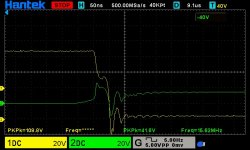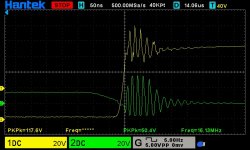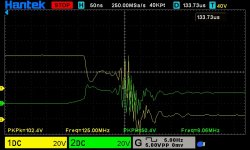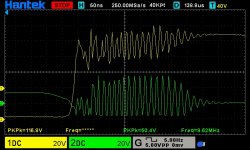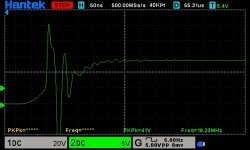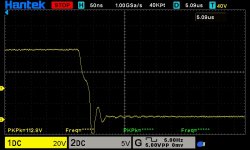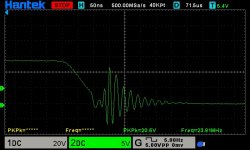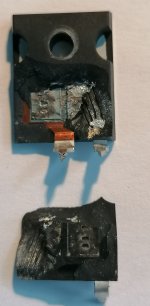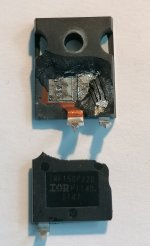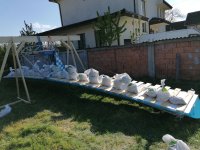IT WORKS!!! I went out with the table :lol: did some full throttle testing, man i missed the sound of 3 blades at 2400 RPM and sitting 40cm behind it

. It pulled 182A (battery amps) 16kw, the battery was not fully charged.
The test was done to simulate a short flight, 60 sec full throttle for take off, then 2 minutes 12Kw, then 10 minutes 7 Kw, a short flight around traffic pattern. Outside temp 26degC and pressure 979hectopascals. After 60 sec 16Kw motor temp got to 51degC, then after another 2 min at 12Kw it got to 59degC, the controller got up to 39degC after those 3 minutes, the battery got up to 46degC, then for the rest of 10 min motor and controller them went down slowly, but batt temp stayed at 46 till the end of test. I expect these temps to be a little lower in the air because of better airflow mainly over motor, in this static test motor does not get enough airflow from prop.
The conclusion after a 13 minute test: the controller works ok (it needs a few software tweaks here and there), motor and prop rock's, the battery on the other hand it is a bit old and it's internal rezistence went up a bit with time, at the start of test it had 91V and in the first seconds after applying full power it went down to 86V, that is 5V drop for 16kw, it does not sound much but is almost 1Kw of power disipated as heat inside the battery, luckily it has 33kg mass of thermal inertia, so by the time i'm at traffic pattern altitude in 3 minutes i'm done pulling max power, and then it settles slowly the temp rise. Heat management in the battery is critical, controller keeps an eye on that and reduces power when it goes over 55degC, so i'l keep an eye on that. All 22 cells are monitored they all stayed at the same voltage +/- 0,03V, a good sign that all cells aged the same, (each cell consist of 12 parallel cells witch reduces the chances of one cell going bad).
The 4 layer boards and isolated gate drives in the controller are awesome, there ware no interferences from power section to command board, every displayed parameter is still and woks as it should, there ware no abnormalities, it has a log that logs every thing min/max and out of normal... . I could not be happier with how it worked.
I did pull a few agresive throttle up-s, the system took it just fine, but after a few tries i was not confortable any more with the table test stand for such agresion, the motor mount was bolted to the table and tied with straps by the car, but still with such agresion it seemed it might what to pull itself off from the table

, 16kw is no joke

.
The next test will be with the system mounted on the aircraft, a 30 minute static test, in the next days.



